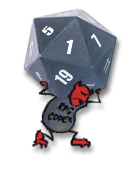Examples in these things can also really fuck over the issuer. If the actual mechanism is that Fig gets whatever DRIL decides to give them, then they really shouldn't have included those models that suggest otherwise. I've seen hedge and private equity funds get in trouble for exactly this kind of thing with the SEC. The fact that Dark Rock and Fig have a lot of overlap in their ownership also wouldn't help in the event of litigation.
It's not what DRIL decides to give them (if they follow the agreement). Here's how it works:
- PoE2 makes $1000 from new copies on Steam.
- Steam takes $300, DRIL gets $700.
- Fig takes 16.1% of DRIL's $700 = $112.7.
- Fig shares 85% of that with investors (could be higher/lower at the board's discretion).
However, if DRIL has an arrangement with another company, Fig could be taking 16.1% of a smaller amount than expected.
Example: if Versus Evil takes 10% after distributions fees, DRIL makes $630 instead of $700. Now, instead of making $112.7, Fig makes $101.43.
DRIL
could preserve Fig's revenue by paying VE after Fig's cut. However, by sharing the revenue with VE
before that step, DRIL and VE can have more flexibility (and money) with their arrangement. They could keep more money between themselves by giving VE a bigger cut, even if that money goes back to DRIL in another way. For instance: they may have signed a deal where VE pays for the VO and console ports in exchange for a bigger cut. DRIL would technically make less money from each new copy, but they could be saving money in the process, since they were originally going to pay for that stuff themselves.










![Glory to Codexia! [2012] Codex 2012](/forums/smiles/campaign_tags/campaign_slushfund2012.png)
 codexers.
codexers.













